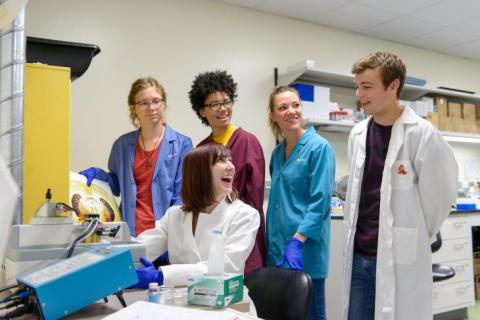New research reveals poor communication between sex chromosomes
New research reveals poor communication between sex chromosomes

According to a Smithsonian Magazine feature titled “Human Sex Chromosomes Are Sloppy DNA Swappers,” Arizona State University School of Life Sciences assistant professor and Biodesign Institute researcher Melissa Wilson Sayres has discovered that the X and Y chromosome are not very neat when pairing and sharing DNA.
While most of the 22 pairs of chromosomes in a human’s DNA swap genetic material along their entire length, the X and Y sex chromosomes evolved in a way that communication can be limited. As a result, scientists once thought only a few genes at the end of the chromosome could be traded between chromosomes. However, Wilson Sayres’ research revealed that other genes could be accidentally traded during this limited exchange.
When one of those genes in particular — the Sex-determining Region of the Y chromosome — is switched around unintentionally, a person can develop de la Chapelle syndrome. The disorder, which affects one in 20,000 people, causes a genetic female (two X chromosomes) to develop outwardly as a male. Though Wilson Sayres doesn’t specifically research this disorder, her work offers a probable mechanism that supports a 2012 study suggesting a similar cause.
Her research team presented its results in detail earlier this month at the 2015 meeting of the Society of Molecular Biology and Evolution in Vienna.
Smithsonian Magazine
Editor's Note: Links are included for informational purposes only. Due to varying editorial policies, news publications may remove or change a link for archival purposes at any time without notice.


